-
BackX
-
Components
-
-
Category
-
Semiconductors
- Diodes
- Thyristors
-
Electro-insulated Modules
- Electro-insulated Modules | VISHAY (IR)
- Electro-insulated Modules | INFINEON (EUPEC)
- Electro-insulated Modules | Semikron
- Electro-insulated Modules | POWEREX
- Electro-insulated Modules | IXYS
- Electro-insulated Modules | POSEICO
- Electro-insulated Modules | ABB
- Electro-insulated Modules | TECHSEM
- Go to the subcategory
- Bridge Rectifiers
-
Transistors
- Transistors | GeneSiC
- SiC MOSFET Modules | Mitsubishi
- SiC MOSFET Modules | STARPOWER
- Module SiC MOSFET ABB’s
- IGBT Modules | MITSUBISHI
- Transistor Modules | MITSUBISHI
- MOSFET Modules | MITSUBISHI
- Transistor Modules | ABB
- IGBT Modules | POWEREX
- IGBT Modules | INFINEON (EUPEC)
- Silicon Carbide (SiC) semiconductor elements
- Go to the subcategory
- Gate Drivers
- Power Blocks
- Go to the subcategory
- Electrical Transducers
-
Passive components (capacitors, resistors, fuses, filters)
- Resistors
-
Fuses
- Miniature Fuses for electronic circuits - ABC & AGC Series
- Tubular Fast-acting Fuses
- Time-delay Fuse Links with GL/GG & AM characteristics
- Ultrafast Fuse Links
- Fast-acting Fuses (British & American standard)
- Fast-acting Fuses (European standard)
- Traction Fuses
- High-voltage Fuse Links
- Go to the subcategory
- Capacitors
- EMI Filters
- Supercapacitors
- Power surge protection
- TEMPEST emission revealing filters
- Surge arrester
- Go to the subcategory
-
Relays and Contactors
- Relays and Contactors - Theory
- 3-Phase AC Semiconductor Relays
- DC Semiconductor Relays
- Controllers, Control Systems and Accessories
- Soft Starters and Reversible Relays
- Electromechanical Relays
- Contactors
- Rotary Switches
-
Single-Phase AC Semiconductor Relays
- AC ONE PHASE RELAYS 1 series| D2425 | D2450
- One phase semiconductor AC relays CWA and CWD series
- One phase semiconductor AC relays CMRA and CMRD series
- One phase semiconductor AC relays - PS series
- Double and quadruple semiconductor AC relays - D24 D, TD24 Q, H12D48 D series
- One phase semiconductor relays - gn series
- Ckr series single phase solid state relays
- One phase AC semiconductor relays for DIN bus - ERDA I ERAA series
- 150A AC single phase relays
- Rail Mountable Solid State Relays With Integrated Heat Sink - ENDA, ERDA1 / ERAA1 series
- Go to the subcategory
- Single-Phase AC Semiconductor Relays for PCBs
- Interface Relays
- Go to the subcategory
- Cores and Other Inductive Components
- Heatsinks, Varistors, Thermal Protection
- Fans
- Air Conditioning, Accessories for Electrical Cabinets, Coolers
-
Batteries, Chargers, Buffer Power Supplies and Inverters
- Batteries, Chargers - Theoretical Description
- Modular Li-ion Battery Building Blocks, Custom Batteries, BMS
- Batteries
- Battery Chargers and Accessories
- Uninterruptible Power Supply and Buffer Power Supplies
- Inverters and Photovoltaic Equipments
- Energy storage
- Fuel cells
- Lithium-ion batteries
- Go to the subcategory
-
Automatics
- Spiralift Lifts
- Futaba Drone Parts
- Limit Switches, Microswitches
- Sensors, Transducers
-
Infrared Thermometers (Pyrometers)
- IR-TE Series - Water-proof Palm-sized Radiation Thermometer
- IR-TA Series - Handheld Type Radiation Thermometer
- IR-H Series - Handheld Type Radiation Thermometer
- IR-BA Series - High-speed Compact Radiation Thermometer
- IR-FA Series - Fiber Optic Radiation Thermometer
- IR-BZ Series - Compact Infrared Thermometers
- Go to the subcategory
- Counters, Time Relays, Panel Meters
- Industrial Protection Devices
- Light and Sound Signalling
- Thermographic Camera
- LED Displays
- Control Equipments
- Go to the subcategory
-
Cables, Litz wires, Conduits, Flexible connections
- Wires
- Cable feedthroughs and couplers
- Litz wires
-
Cables for extreme applications
- Extension and Compensation cables
- Thermocouple cables
- Connection cables for PT sensors
- Multi-conductor wires (temp. -60C to +1400C)
- Medium voltage cables
- Ignition wires
- Heating cables
- Single conductor cables (temp. -60C to +450C)
- Railway cables
- Heating cables Ex
- Cables for the defense industry
- Go to the subcategory
- Sleevings
-
Braids
- Flat Braids
- Round Braids
- Very Flexible Flat Braids
- Very Flexible Round Braids
- Cylindrical Cooper Braids
- Cylindrical Cooper Braids and Sleevings
- Flexible Earthing Connections
- PCV Insulated Copper Braids (temp. up to 85C)
- Flat Aluminium Braids
- Junction Set - Braids and Tubes
- Steel Braids
- Go to the subcategory
- Traction Equipment
- Cable Terminals
- Flexible Insulated Busbars
- Flexible Multilayer Busbars
- Cable Duct Systems
- Go to the subcategory
- View all categories
-
Semiconductors
-
-
- Suppliers
-
Applications
- CNC Machine Tools
- DC and AC Drives (Inverters)
- Energetics
- Energy bank
- Equipment and Components for Hazardous Areas [Ex]
- Equipment for Distribution, Control and Telecommunications Cabinets
- HVAC Automation
- Induction Heating
- Industrial Automation
- Industrial Protective Devices
- Machines for Drying and Wood Processing
- Machines for Thermoforming Plastics
- Mining, Metallurgy and Foundry
- Motors and Transformers
- Power Supplies (UPS) and Rectifier Systems
- Printing
- Temperature Measurement and Regulation
- Test and Laboratory Measurements
- Tram and Railway Traction
- Welding Machines
-
Assembly
-
-
Inductors
-
-
Induction devices
-
-
Service
-
- Contact
- Zobacz wszystkie kategorie
Power Diodes – Types, Applications, and Technical Parameters

Modern electronics largely relies on semiconductor components, and the diode is one of the most important elements. In both power circuits and modern lighting, semiconductor diodes play a key role in controlling current flow and protecting electronic circuits. LED diodes, due to their ability to emit light, have become the foundation of modern lighting systems, while traditional semiconductor diodes are used in rectifier circuits, protections, and power electronics.
What is a diode and how does it work?
A diode is a semiconductor component that allows current to flow in only one direction. Each diode has two terminals – an anode and a cathode – and correct connection is essential for its operation. In practice, a diode acts as a controlled current conductor, and its technical parameters – such as maximum forward voltage, nominal current, or reverse resistance – determine its use in a particular circuit.
In the case of power diodes, which must withstand high current levels, an important aspect is heat dissipation and ensuring stable operation in electronic circuits, which directly affects the lifespan and reliability of devices.
LED diode – technology and characteristics
An LED diode, or light-emitting diode, is a semiconductor light source that emits light when current passes through it. LED technology enables the creation of modern and energy-efficient lighting systems, and different LED types allow adjustment of luminous flux, color, and intensity for specific applications.
Technical parameters of an LED diode include, among others:
- Luminous flux in lumens,
- Maximum current,
- Light color and LED diode color,
- Power consumption and energy efficiency,
- Lifespan and operational stability at various temperatures.
Thanks to these properties, LED diodes are used in LED lighting, floodlights, lamps, and electronic devices where high efficiency and long lifespan of light sources are required.
Types of LED diodes
In practice, LED diode types can be divided into several basic categories that differ in design, power, and mounting method:
SMD (Surface Mounted Device) LEDs
SMD LEDs are mounted directly on the printed circuit board. Their characteristics include small size, high efficiency, and easy application in LED strips, lamps, and lighting products. SMD LEDs allow achieving high luminous flux with low power consumption, making them a popular choice in modern LED lighting.
COB (Chip On Board) LEDs
COB LEDs consist of multiple LED chips mounted on a single board, allowing a large amount of light to be emitted from a small area. COB LEDs feature high efficiency, uniform luminous flux, and can be used in LED floodlights or high-power lamps. COB LED diodes are applied wherever high light output and effective heat dissipation are required.
Other types of semiconductor diodes
Besides SMD and COB, various types of diodes are used in electronics, including:
- Zener diodes, which stabilize voltage in circuits,
- Schottky diodes, characterized by a low forward voltage drop,
- Traditional silicon diodes, used in rectifiers and protection circuits.
Each type of diode has its own characteristics and technical parameters that determine its use in specific electronic circuits.
Applications of power diodes
Power diodes are an essential element of electronic circuits with high current consumption. They are used in:
- Power supplies and rectifiers,
- Industrial systems,
- High-power electronic devices,
- Modern LED lighting,
- Protection and control circuits.
For LED diodes, their applications include LED lighting, lamps, LED strips, floodlights, and other lighting products where high efficiency and long lifespan of light sources are important.
Technical parameters
Choosing the right diode, whether a semiconductor diode or an LED, requires knowledge of key technical parameters such as:
- Maximum forward current,
- Maximum voltage,
- Current and luminous flux for LED diodes,
- Forward voltage drop,
- Type of terminal and mounting method (SMD, COB),
- Thermal resistance and heat dissipation in the device.
In practice, the correct parameters ensure efficient light emission in LED diodes and reliable operation of power diodes at high current levels in electronic circuits.
Summary
Semiconductor diodes and LED diodes are fundamental elements of modern electronics and lighting. Their proper use requires knowledge of diode types, technical parameters, and mounting methods to ensure efficient current flow, high performance, and long device lifespan.
From SMD LEDs through COB LEDs to Zener and Schottky diodes – each diode type performs specific functions and finds application in various electronic circuits and lighting systems. Understanding diode characteristics allows designing reliable and modern products, both in industry and consumer electronics.
We invite you to explore our offer – we provide a wide selection of power diodes and LED diodes for various electronic and lighting applications. See how our solutions can improve the efficiency and reliability of your systems.
Related products
Related posts
 Thermally conductive materials in power storages
Thermally conductive materials in power storages
 Measuring power and energy in electric circuits
Measuring power and energy in electric circuits
 Wentylatory przemysłowe - rodzaje, właściwości
Wentylatory przemysłowe - rodzaje, właściwości

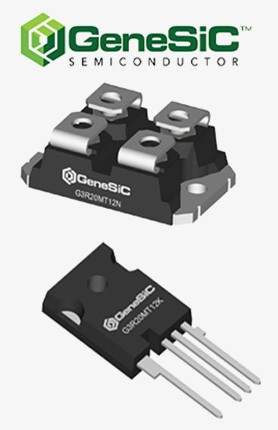


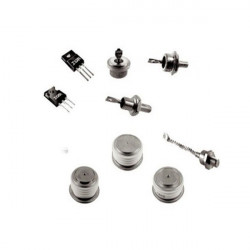
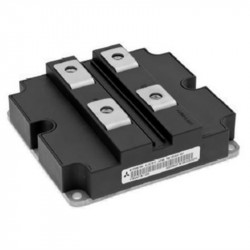
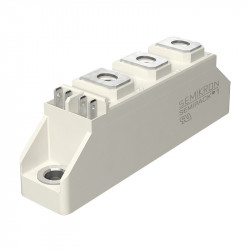
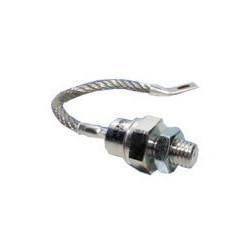
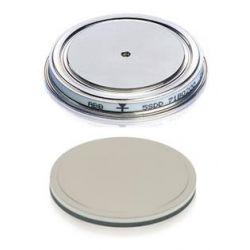
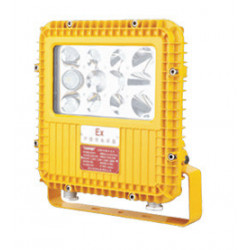
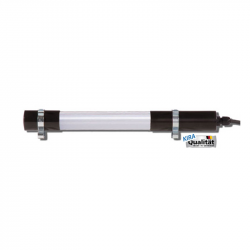

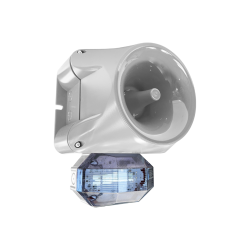
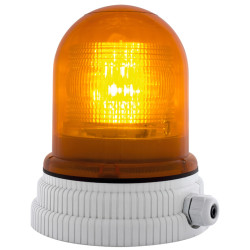
Leave a comment